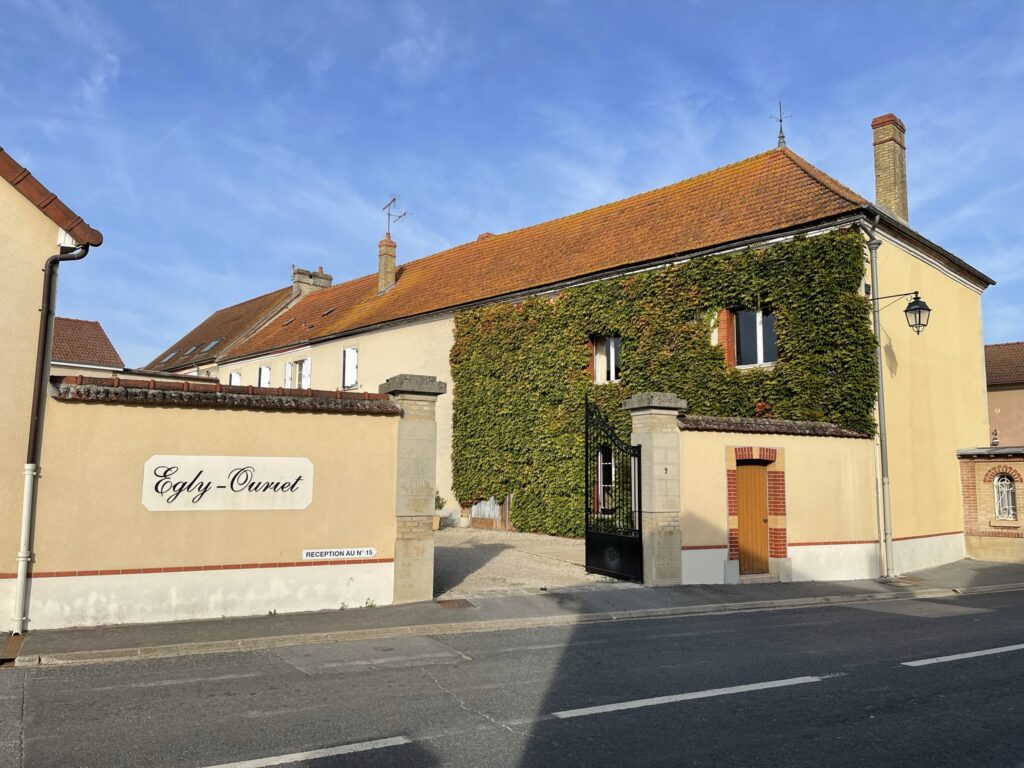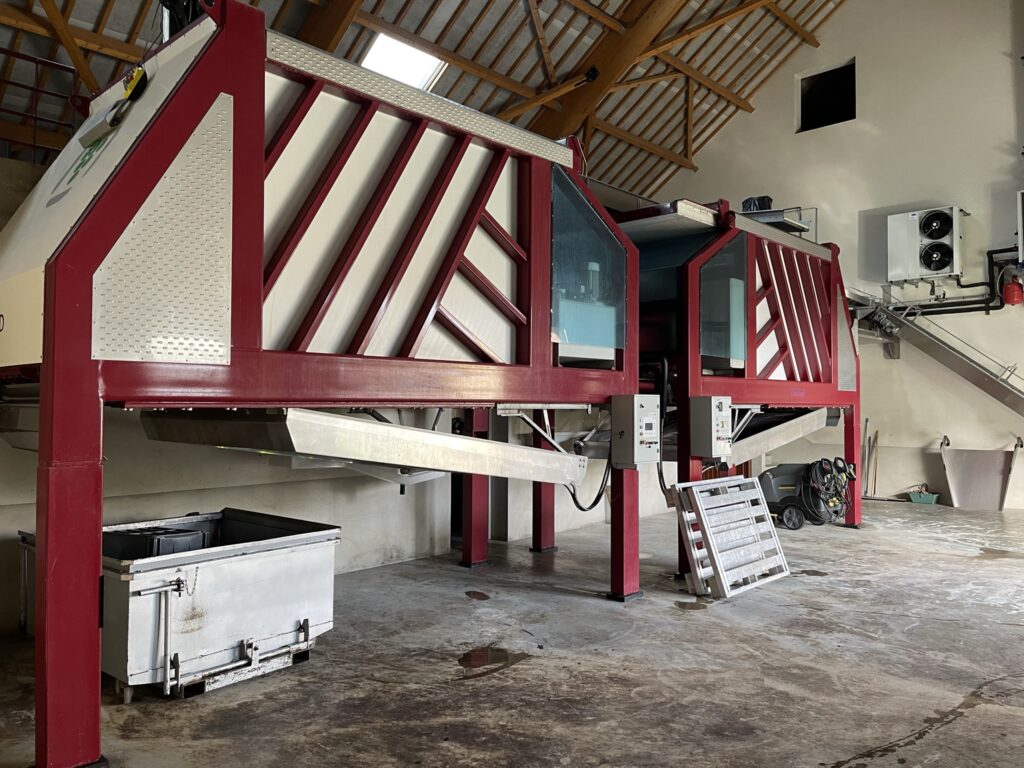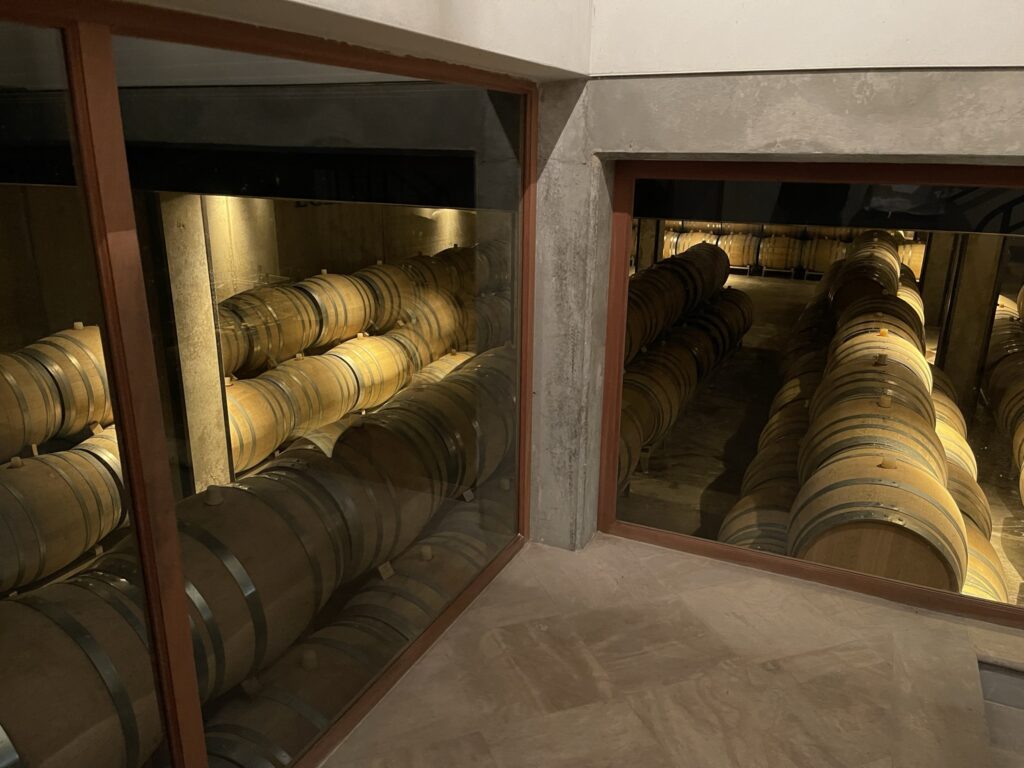Before the rise of the Reims and Épernay houses, when the wines of Champagne were still non-fermented, Aÿ was the center of wine production in the region. The name Aÿ is therefore often used adjectivally in the names of other villages, with Épernay meaning "just past Aÿ" and Mareuil-sur-Aÿ and Fontaine-sur-Aÿ indicating their location upstream from the village of Aÿ. Mareuil-sur-Aÿ and Fontaine-sur-Aÿ are located in the upper reaches of the village of Aÿ. Traveling south from Reims, Ambonnay is reached "before Aÿs".
Ambonay
Historically, the three main areas of Champagne viticulture have been the Montagne de Reims (Reims Mountains), the Vallée de la Marne (Marne Valley), and the Côte des Blancs (White Hills) in the Marne department. In the Côte des Blancs, the white grape Chardonnay is grown almost exclusively, whereas in the Montagne de Reims and the Vallée de la Marne, black grapes are predominant. In the map, the area highlighted in green below Reims is the Montagne de Reims area, with the village of Ambonnay at its southern end.

*Center of Champagne (excerpt from Wikipedia)
The vineyards of Ambonnay are located on south-facing slopes, and the abundance of sunshine in the Champagne region is ideal for growing Pinot Noir, the slowest-growing of the main Champagne varieties. In fact, of the 387 hectares (ha) of vines grown in Ambonnay, 81% are planted to Pinot Noir and 19% to Chardonnay. The official classification of Champagne, the "Ecole des Crus" (class of production area), which began in 1927 as a price index for trading grapes for Champagne, ranks the 324 villages in the region, of which Ambonnay is the top 100% Grand Cru with only 17.
The most distinctive feature of Ambonnay Champagnes is the ripe fruitiness derived from Pinot Noir grapes grown in south-facing vineyards at high elevation. In the same Montagne de Reims area, the champagnes of Maïy and Versnay, which are grown on north-facing slopes, have a cooler taste, while the red of Coteaux Champenois, vinified by the Maïy cooperative, is lighter in color and more elegant in style. On the other hand, Champagnes made mainly from Pinot Noir from the vineyards of Aÿ and parts of Maruilles-sur-Aÿ, which are also on south-facing slopes but are exposed to the rays of the Marne River and the Canal de Marne, tend to be overly heavy, while those from Ambonnay, which are not as much influenced by the Marne River, are more balanced and refined. Champagnes vinified mainly from Pinot Noir tend to be overly heavy.
Famous vineyards in Ambonnay include Eglis-Ulier, Les Clayères vinified by Eric Rodez, Clos d'Ambonnay owned by Krug, and Le Beau du Clos by Jacques Seros, while well-known producers based in the village include Eglis-Ulier, Eric Rodez, Paul Detenne and Marguet are well-known producers based in this village.
Eric Rodez.
The village of Ambonnay has a population of less than 1,000, and Eric Rodez is the village chief who unites the residents. While Francis Eglis is an artist-type oenologist with a rather dour impression, Eric Rodez is more of a philosopher, and when he starts talking about the taste of wine, he never stops. The Rodez family has been growing grapes in the village of Ambonnay for three centuries, and Eric Rodez is the eighth generation to take over the estate in 1982.

*Domaine Eric Rodez

*Eric Rodez tasting in the Barrel Room
Like Anselm Seros, Eric Rodez studied viticulture and winemaking at the Beaune School of Oenology before gaining experience at Domaine Lappe in Pernand-Vergelesses and in cellars in Beaujolais, Rhone, and Champagne. He worked under Henri Krug as chief enologist at Krug for the last year before taking over his family's domaine, so Eric Rodez's Champagnes are strongly influenced by Krug in terms of the use of oak and blending.
Domaine Eric Rodez owns 35 parcels of vineyards totaling 6 ha on a south-southeast facing slope in the village of Ambonnay, with 55% Pinot Noir and 45% Chardonnay, a high percentage of Chardonnay for this village. Since 1989, Eric Rodez has been practicing organic viticulture and biodynamics, and has stopped using herbicides and chemical fertilizers.
THE HARVESTED GRAPES ARE VINIFIED BY PARCEL AND BY VARIETY TO PRODUCE OVER 60 DIFFERENT VARIETIES OF WINES. 80% OF THE WINE UNDERGOES ALCOHOLIC FERMENTATION IN OAK BARRELS, AVOIDING THE USE OF NEW OAK. MALOLACTIC FERMENTATION (MLF) IS BLENDED WITH THOSE THAT AVOID IT IN ORDER TO ACHIEVE ACIDITY BALANCE AND COMPLEXITY.
The top of the range of Champagnes produced at Domaine Eric Rodez is the Empreinte de Terroir (empreinte means "footprints") series, which consists of two vintages, Noire (Pinot Noir) and Blanche (Blanche = Chardonnay). Noire (Pinot Noir) and Blanche (Chardonnay). Both vintages are made from the best grapes from 5 to 7 parcels in Ambonnay, with alcoholic fermentation taking place in small oak barrels, while MLF is avoided and the wine is aged sur lie for 10 years after secondary fermentation in the bottle. Although dosage is low at 2.5 to 5 grams per liter, the wine has depth from its long sur lie aging and reflects the warmth of the vineyard on the south-facing slopes of Ambonnay, without being overly sharp, despite the avoidance of MLF with acid reduction. The wine is not overly sharp, despite the avoidance of MLF with reduced acidity.
WHILE AMPLANTE DE TERROIR IS A CHAMPAGNE WITH A DISTINCT PERSONALITY, MY PERSONAL FAVORITE IS THE CUVÉE DES GRANDS VENTAGES, WHICH CAN BE PURCHASED FOR ABOUT HALF THE PRICE OF AMPLANTE. THIS IS A BLEND OF SEVERAL GOOD VINTAGE VINTAGES, AND THE BOTTLES CURRENTLY AVAILABLE ARE A BLEND OF 1998, 1999, 2000, 2004, AND 2005 VINTAGES. THE GRAPE VARIETIES ARE 70% PINOT NOIR AND 30% CHARDONNAY. 100% OF THE ALCOHOLIC FERMENTATION TAKES PLACE IN SMALL OAK BARRELS, WITH ONLY 5% OF THE CHARDONNAY UNDERGOING MLF. THE CHARDONNAY BLEND GIVES THE WINE A FRESH ACIDITY, MAKING IT A RICH CHAMPAGNE THAT IS NOT TOO HEAVY AND CAN BE DRUNK FOR MANY GLASSES.

*Domaine Eglis-Ullier
Egli-Ulier.
DOMAINE EGLIS-ULIER IS ONE OF THE LEADING PRODUCERS NOT ONLY IN THE VILLAGE OF AMBONNAY, BUT IN CHAMPAGNE AS A WHOLE. THE DOMAINE WAS VIRTUALLY UNKNOWN BEFORE FRANCIS TOOK OVER, BUT THE NUMEROUS PRODUCTION INNOVATIONS HE HAS MADE HAVE MADE IT A PRODUCER THAT RANKS ALONGSIDE KRUG, SARON, AND JACQUES SEROS. IN PARTICULAR, SINCE THEY CAME INTO THE WORLD AT THE SAME TIME AS ANSELM SEROS, SEROS FOR BLANC DE BLANCS AND EGLISE FOR BLANC DE NOIRS ARE REGARDED AS THE TWO GIANTS OF THE RECORTEM MANIPULANT (RM).
Domaine Eglis-Ullier owns a total of 11.7 ha of vineyards: 7.7 ha in Ambonnay (100% Grand Cru), 1.7 ha in Versnay, 0.3 ha in Bouzy, and 2 ha in the village of Vrigny (90% Premiers Cru). One of Francis Egli's reforms in the vineyards was the use of organic farming methods, which involved tilling the topsoil to eliminate the use of herbicides and replacing insecticides with sex-disrupting hormone capsules. The most important reform was to reduce the number of bunches per vine to ensure a healthy ripe grape harvest.
The grapes are harvested by hand and brought to the estate in small colander-shaped plastic boxes, where they are slowly pressed into whole bunches in a state-of-the-art Cocard press over a period of four hours. Traditionally, vertical presses have been used in Champagne vinification, but the Cocard press is a horizontal pressing system that allows the dregs to be carried out by gravity from the bottom of the press, making it easier to work with.
ALCOHOLIC FERMENTATION TAKES PLACE SPONTANEOUSLY IN 228-LITER FRENCH OAK BARRELS PURCHASED FROM DOMINIQUE LAURENT, AS WELL AS IN STAINLESS STEEL AND ENAMELED VATS, WITHOUT THE ADDITION OF CULTURED YEASTS. THE DECISION IS BASED ON THE AMOUNT AND COMPOSITION OF ACIDITY IN THE PRESSED JUICE.

*Cocard press machine
In terms of vinification, Francis Eglis considers the long sur lie aging after the second fermentation in the bottle to be the most important, as it gives the champagne its structure and complexity. In fact, many of Domaine Eglis-Euglier's Champagnes are aged for more than 48 months on the sur lie, and some cuvées are aged for more than 100 months. Because the long aging process has already imparted a rich aromatic flavor, there is little need for dosage to balance the palate, and only 2 to 5 grams per liter are added.
THE FIRST BRAND TO REPRESENT DOMAINE EGLIS-ULLIER IS EGLIS-ULLIER BLANC DE NOIRS LES CLAYÈRES VIEILLES VIGNES, VINIFIED FROM A PLOT OF PINOT NOIR PLANTED IN 1946 IN LES CLAYÈRES, ONE OF THE MOST FAMOUS VINEYARDS IN AMBONNAY. TASTED AT THE DOMAINE. THE BOTTLE TASTED AT THE ESTATE, WHICH WAS DEGORGED IN SEPTEMBER 2021, WAS A BLEND OF 60% OF THE 2016 VINTAGE, WHICH WAS A GOOD YEAR, AND 40% RESERVE WINE FROM THE 2015 VINTAGE, WHICH WAS ALSO A GOOD YEAR. THE WINE WAS FERMENTED IN SMALL FRENCH OAK BARRELS (10% NEW) AND AGED SUR LIE FOR 72 MONTHS, AVOIDING MLF, WITH AS LITTLE AS 1 GRAM OF DOSAGE PER LITER. THE WINE HAS A NICE YEASTY AROMA FROM ITS LONG SUR LIE AGING, MIXED WITH RIPE APPLE AND PRALINE AROMAS. THE ACIDITY IS RATHER MILD FOR A CHAMPAGNE, RESULTING IN A RICH, CONCENTRATED, FULL-BODIED WINE WITH MINERAL NOTES ON THE FINISH.
The Blanc de Noirs Les Crayères Vieilles Vignes used to be the top-tier item, but around the time the 2008 vintage was rated a perfect 100 points by the Wine Advocate, the Millésime began to circulate at staggering prices. wine-searcher. A search on wine-searcher.com shows that the 2008 vintage retails for over 120,000 yen worldwide, and the latest vintage, 2014, sells for over 70,000 yen a bottle. The Millésime is vinified from old vines in the village of Ambonnay, and in the case of the 2014 vintage is a blend of 70% Pinot Noir and 30% Chardonnay, aged 96 months sur lie, with 2 grams of dosage per liter. The nose has more green apple nuances than the Blanc de Noirs Les Crayères Vieilles Vignes, and the 30% Chardonnay blend gives it a fresher taste, which I personally prefer.

*Barrel room at Domaine Eglis-Ullier
Before the ongoing global warming scare, Ambonnay Blanc de Noirs was my favorite Champagne. However, now that Pinot Noir ripens fully year after year, some vintages can be too heavy. I believe that these former Ambonnay Blanc de Noirs drinkers will in the future move on to fresher, more balanced Champagnes with 10-30% Chardonnay in the blend.

*Francis Egli and his daughter Clemence.


